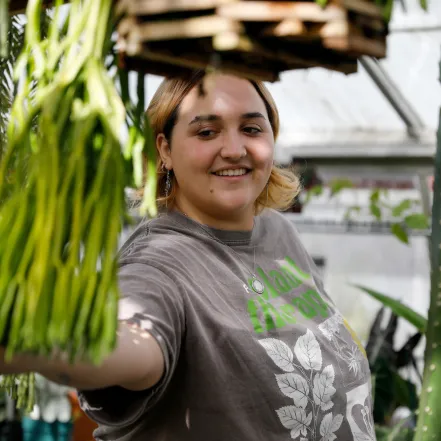Learning and Engagement Plan

Purpose and Overview
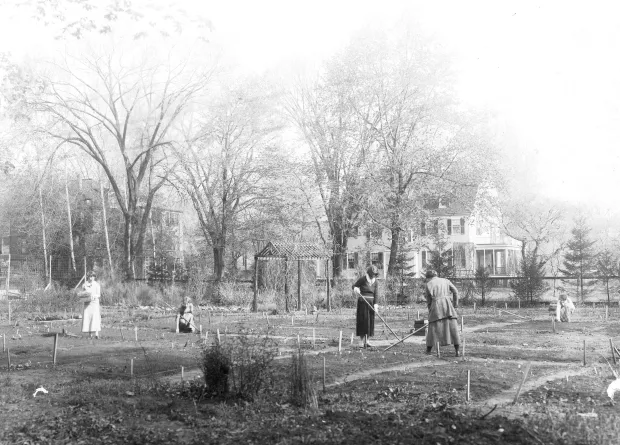
Discovery: The Past Informing Our Future
We hope that our educational efforts inspire learners to translate their curiosity about plants into inquiry and action in service to the botanical world, within a framework of environmental and social justice. In order to understand how best to achieve this goal, we first worked to understand our users and their needs, as well as the botanic garden’s specific resources, strengths, and weaknesses. Our efforts have included an internal SWOT (Strengths, Weaknesses, Opportunities and Threats) analysis, focus groups and surveys, staff charrettes, and course collaborations, each aimed at interrogating our current practices and exploring the impact we are having on our users.
These efforts have culminated in the following actions, as put forward in this plan:
-
Defining our vision and approach to teaching and learning.
-
Developing a series of principles to guide our educational work.
-
Centralizing our engagement and interpretive efforts around three key topics and their corresponding themes.
Vision and Approach to Education
At the Botanic Garden of Smith College, teaching and learning are at the heart of our work. As educators, botanic garden staff and volunteers bring a range of resources, styles and expertises to our teaching. We believe in a constructivist approach to teaching, stressing the active involvement of learners as they create meaning and knowledge from their experiences with our staff, spaces, collections and gardens. Our educational initiatives are anchored in a commitment to initiating or expanding basic plant literacy, while providing learners with information and context to aid in their understanding of—and sense of connection to—the botanical world. Through the unique lens of plants, ecology and the history of botanical study, we hope to inspire learners to develop the knowledge and passion needed to act in support of building a more sustainable, equitable and just world.
Guiding Principles
Place-Based and Experiential
To best learn about plants, people must experience them firsthand. We invite active discovery by connecting people directly with our collections. Our goal is for this physical experience to transcend the boundaries of our campus and inspire a lifelong journey of engagement with plants and action in support of the environment.

Equitable and Inclusive
We work to represent a wide range of perspectives and experiences; center, amplify and lift up marginalized voices; and critically examine botanical history, approaches and practices. We recognize that we must continuously recommit ourselves to these actions. It is important for us to build relationships with marginalized, underresourced and underrepresented communities before we invite individuals from these communities into our work so that we can cultivate lasting partnerships and relationships based on benefit sharing, collaboration, appreciation for difference, and empathy.
Collaborative and Learner-centric
Collectively, we are educators and students, experts and novices. We work collaboratively to integrate the liberal arts into our exhibits and botanical narratives. We value curiosity, the beginner’s mind and the individual lived experience. We invite learners to contribute their own insights and experiences in order to build the knowledge of our staff and users alike.
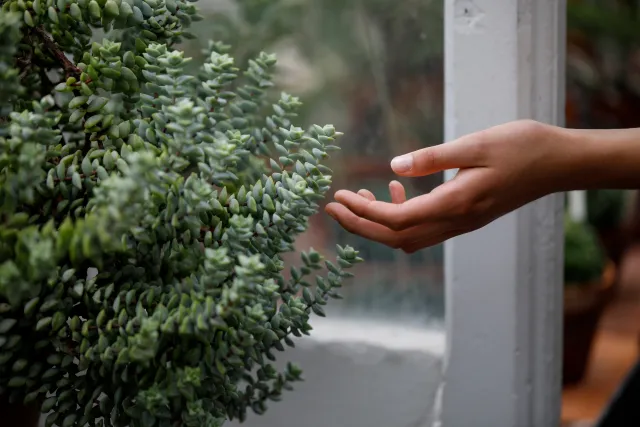
Reflective and Evaluative
Regularly engaging in critique—the practice of intentional and ongoing analysis and assessment of our goals and outcomes—supports our greater mission and is an essential element in ensuring that we are offering informed and valuable educational initiatives. To accurately gauge our impact, we must carefully craft formal and informal assessments, gather feedback from our stakeholders, and analyze data regularly. Equally important to these steps is the reflection and iteration that follows. This cycle supports our mission and ultimately creates a stronger and more impactful organization.
Relevant and Responsive
Public gardens are dynamic spaces that sit at the forefront of many pressing issues of the day. They enable us to explore humanity’s complex urgent problems through both social and environmental lenses. By engaging learners with these issues, we offer opportunities for them to delve deeply into topics while exploring solutions and
supporting well-informed action. Our commitment to nurturing curiosity, flexibility and growth in response to the world around us is key to providing the most relevant and transformative experiences for learners.
SCIENCE
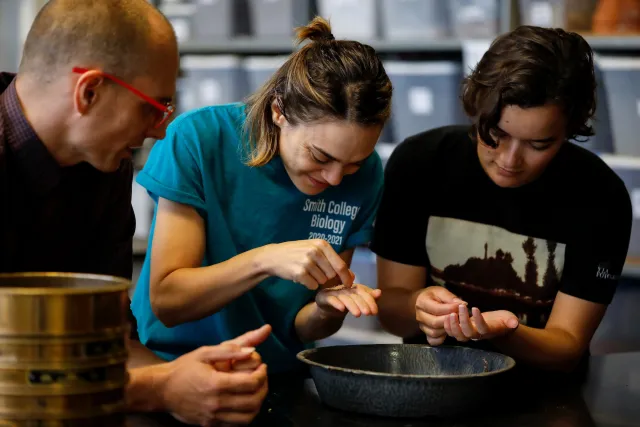
Teaching the building blocks of plant science is core to our educational identity. By anchoring our educational opportunities in the sciences, students can more fully explore, communicate about, and appreciate the botanical world. By studying basic biology and ecology, stakeholders begin to understand the key role plants play in sustaining all life, and can begin to proactively apply these concepts in support of real-world problem solving. Key topics of exploration include botany and horticulture; biology and ecology; biodiversity and conservation; and climate change and sustainability.
Guiding Theme and Subthemes
1. Knowledge of plant science underpins the development of informed, engaged leaders and global citizens.
1.1 Anchoring learner knowledge in plant structure and function provides a foundation on which to develop an appreciation for the diversity of the botanical world. Basic plant knowledge is the foundation for close observation of plants. This in turn provides the opportunity to better understand the world around us, which has the potential to foster connection and encourage new modes of inquiry, creativity and inspiration.
1.2 Understanding biological processes and ecological interdependencies inspires connection to the world and a sense of responsibility for its ethical and sustainable stewardship. This knowledge can lead to a desire to protect and advocate for plant life, while also providing learners with the foundation needed to be informed and effective science communicators.
1.3 Creating biodiverse landscapes and engaging in regional, national and international plant conservation protects ecosystems and supports a sustainable future. Taking action at a local, regional and international level provides essential experiential learning opportunities, supports the health and restoration of our surrounding environment, and helps learners build identities as capable problem solvers and change agents.
1.4 Learning about plants is a key aspect of understanding complex environmental issues including climate change and sustainability. Plants offer a joyful gateway into a more comprehensive understanding of the complexity of many urgent environmental challenges, while also directly informing creative solutions and critical action.
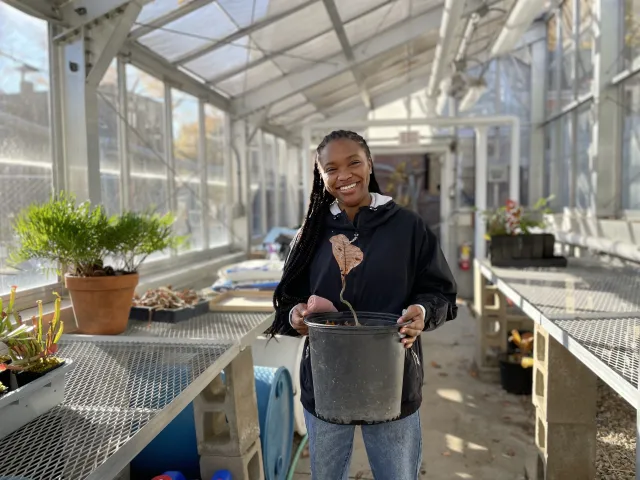
Established in 2022 as part of the new Collections Management Plan, the conservation internship provides hands-on opportunities for students to participate in conservation efforts that go beyond symbolic stewardship of rare species. Through collaborations with local nonprofits and founder plot and meta-collection building and management, the conservation intern becomes well-versed in the key ways that modern botanic gardens are aiming to address biodiversity loss. This program provides unique and valuable experience to students interested in pursuing careers in public gardens and conservation.
CULTURE
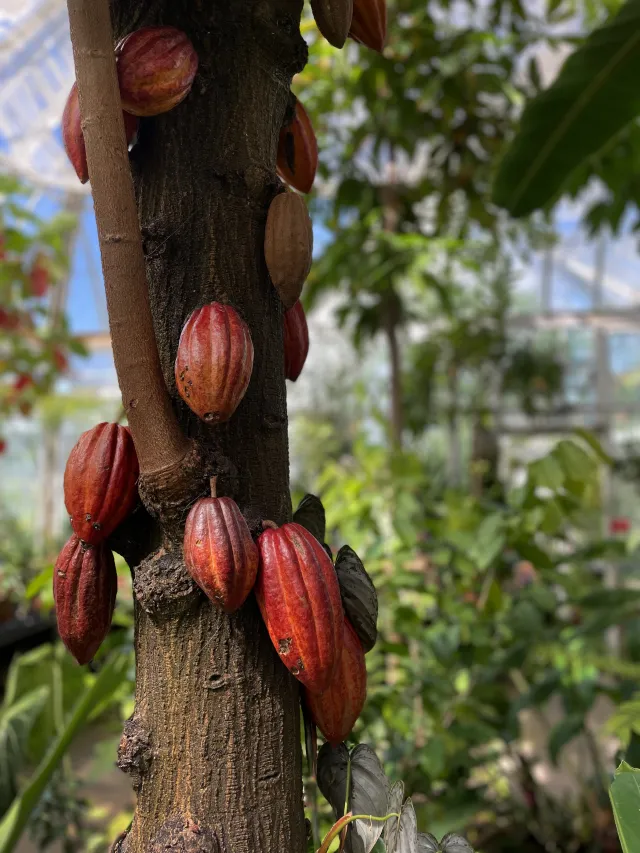
Throughout history, humans have used plants to sustain themselves physically and spiritually. This essential relationship with plants is central to our collective identity as people. Plants have impacted the development of cultures, just as humans have impacted plants. The immense and significant value of plants to human life has been the motivating factor behind both inspired progress and terrible violence and conquest. Our collection presents an important opportunity to explore the complex histories and multifaceted stories at the intersection of people and plants. Key topics of exploration include economic botany; environmental justice; persistent colonial frameworks and legacies; and ways of knowing and traditional ecological knowledge.
2. The relationships between people and plants reveal complex human and environmental histories.
2.1 Studying human use of plants through history teaches us about human cultures and societies from around the world. Exploring the global economic uses of plants helps us to better understand human motivations, values and experiences.
2.2 The ways in which humans have utilized plants throughout time has contributed to the oppression of peoples. We must reflect on, and educate about, the extractive and settler colonial frameworks on which botanical gardens and plant collecting were founded.
2.3 Dominant narratives around botanical research and history have centered on those in power and have largely ignored the contributions of people from marginalized groups. We must continue to center our interpretation on underrepresented narratives and ways of knowing. To do this work authentically, we must foster relationships with and defer to partners who have diverse perspectives and lived experiences in order to fully explore and tell stories through multiple lenses.
2.4 Traditional ecological knowledge is critical to fully understanding plants. Western science is built on settler colonial frameworks which often marginalize or discredit indigenous knowledge. By presenting a diversity of ecological perspectives and ways of knowing, we are able to more fully explore, understand and relate to the plant kingdom.
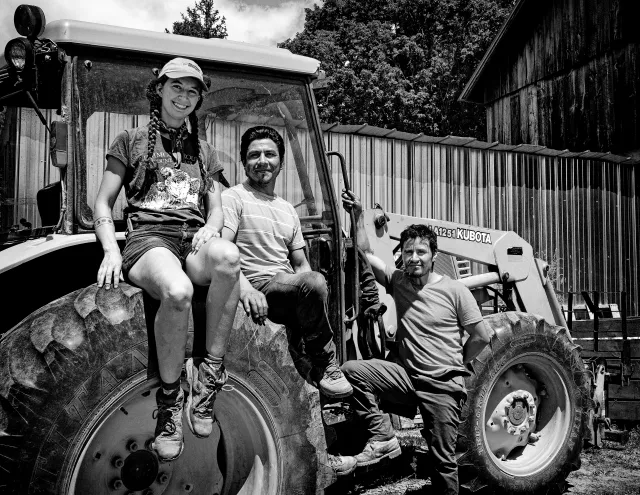
In the face of oppression, people have and always will resist and organize. Farmworkers are no exception. Through the words and portraits of farmworkers in Western Massachusetts, the No Somos Máquinas exhibit explores the broken immigration system, the exclusion of farmworkers from basic labor protections, and the conditions that have compelled them to rise up. Developed by the Pioneer Valley Workers Center with the support of the Botanic Garden of Smith College, this fully bilingual exhibit sheds light on the experiences of local farmworkers. It consists of portraits, interpretive panels, and a timeline of farmworker organizing, as well as audio of oral history excerpts.
PLACE
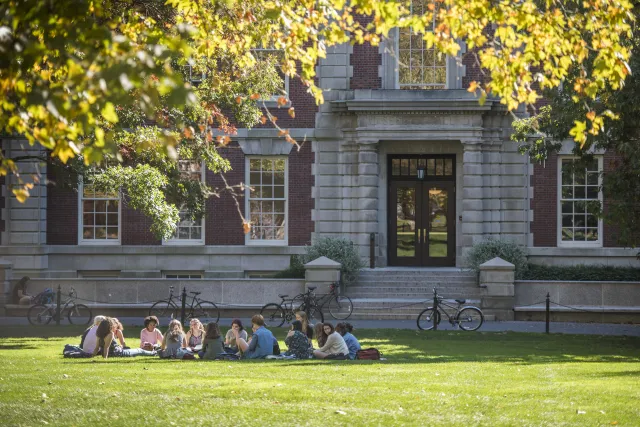
The Botanic Garden of Smith College is deeply rooted in the liberal arts and is a foundation of the Smith experience. Founded on the premise that the scientific study of plants and their ornamental value could complement one another on a college campus, the Smith landscape and botanical holdings have inspired countless students, faculty and visitors. Today, we work with courses across the curriculum to make connections between botanical study and the liberal arts, and advocate for its use and enhancement as a learning resource.
As keepers of the Smith landscape, we bear a responsibility to work with stakeholders to ensure it is a reflection of current values. We play a role in sharing its history and stewarding it ethically and intentionally from both an ecological and a culturally inclusive perspective. Key topics of exploration include local and institutional history; campus and conservatory as classroom; landscape design and placemaking; and sustainability and stewardship.
3. The landscape of Smith College is an essential part of the Smith experience.
3.1 Smith College and the botanic garden are inextricably linked to the history of the land on which they are built. The land on which the botanic garden is sited, Nonotuck, is the ancestral lands of the Nipmuc and Pocumtuc peoples. We have a responsibility to tell the multitude of stories behind the acquisition of Smith’s land and to share its full history.
3.2 The Botanic Garden of Smith College is a key partner in facilitating Smith College’s strategic emphasis on the campus as classroom model of learning. The botanic garden is a resource in providing students a space for hands-on learning, research and academic inquiry. We work with students from all disciplines to make connections between our collections and their academic interests.
3.3 Students live and study among the gardens, greenhouses and landscapes that comprise the Botanic Garden of Smith College and have a unique relationship to the campus. These spaces are an important aspect of their college experience. They foster relaxation and connection with the natural world, and also present an opportunity for students to connect their academic learning with their immediate surroundings.
3.4 As stewards of the Smith landscape, the Botanic Garden of Smith College staff strive to continuously evolve the campus landscape to reflect the values of its diverse stakeholders. As keepers of the Smith landscape, we are constantly evolving our interpretation of our collection and employing sustainable and inclusive practices in our management and curation.
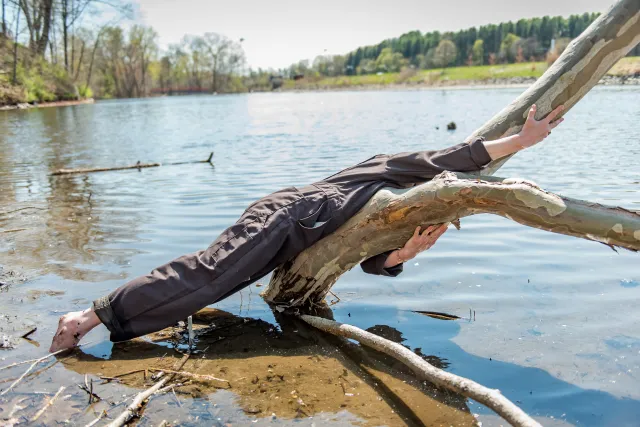
A Curricular Enhancement Program Grant recipient in spring 2021, Chris Aiken and Angie Hauser’s newly-developed course DAN 339 Movement, Ecology and Performance, explores how place and landscape offer inspiration and opportunities for dance, performance and embodied experiences. Through incorporating the study of landscape, geology, anthropology, phenology, hydrology and indigenous studies with the study of dance, students explore how creativity is found in relationship to things, beings, environments, and the historical and cultural contexts.
